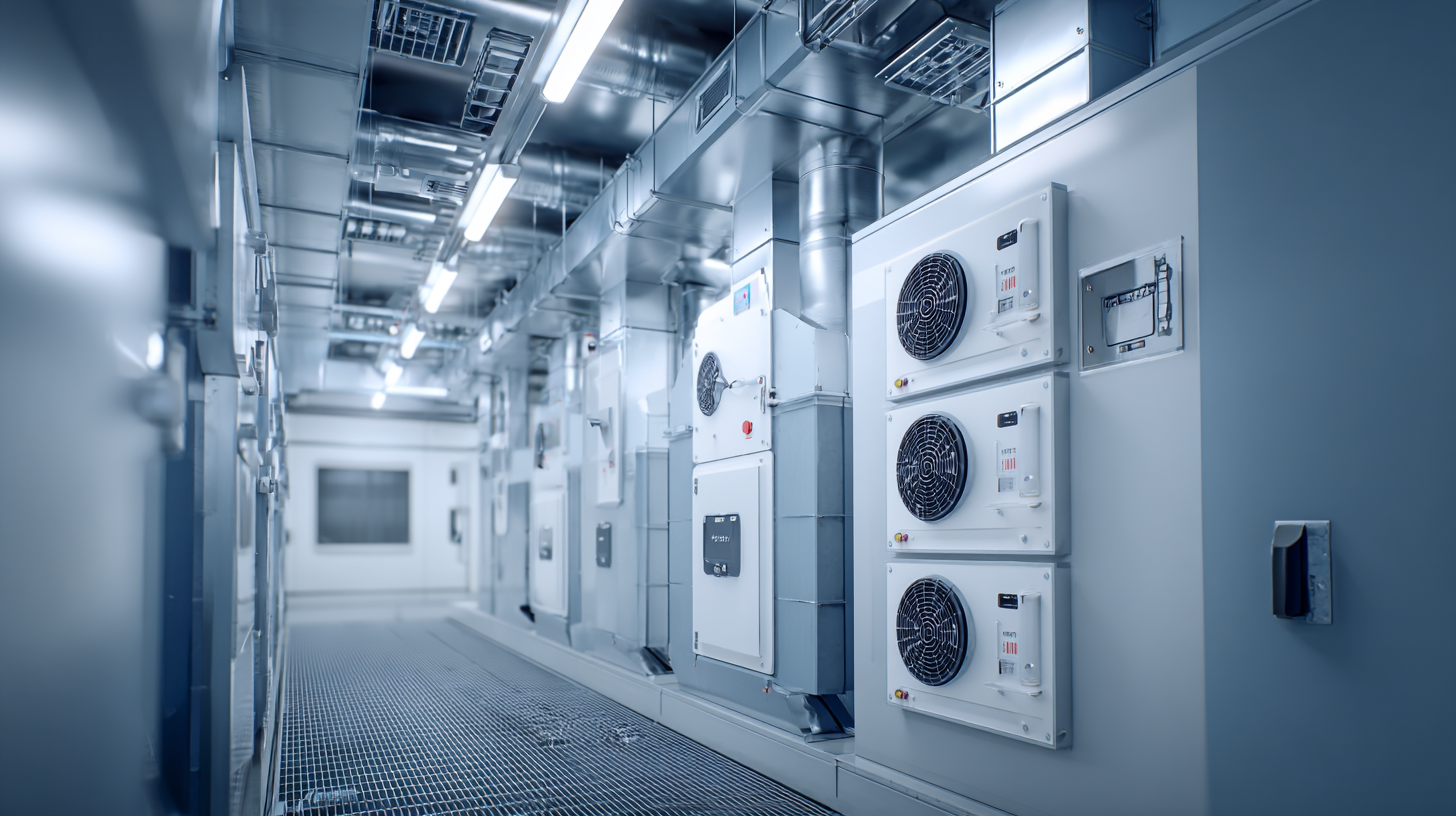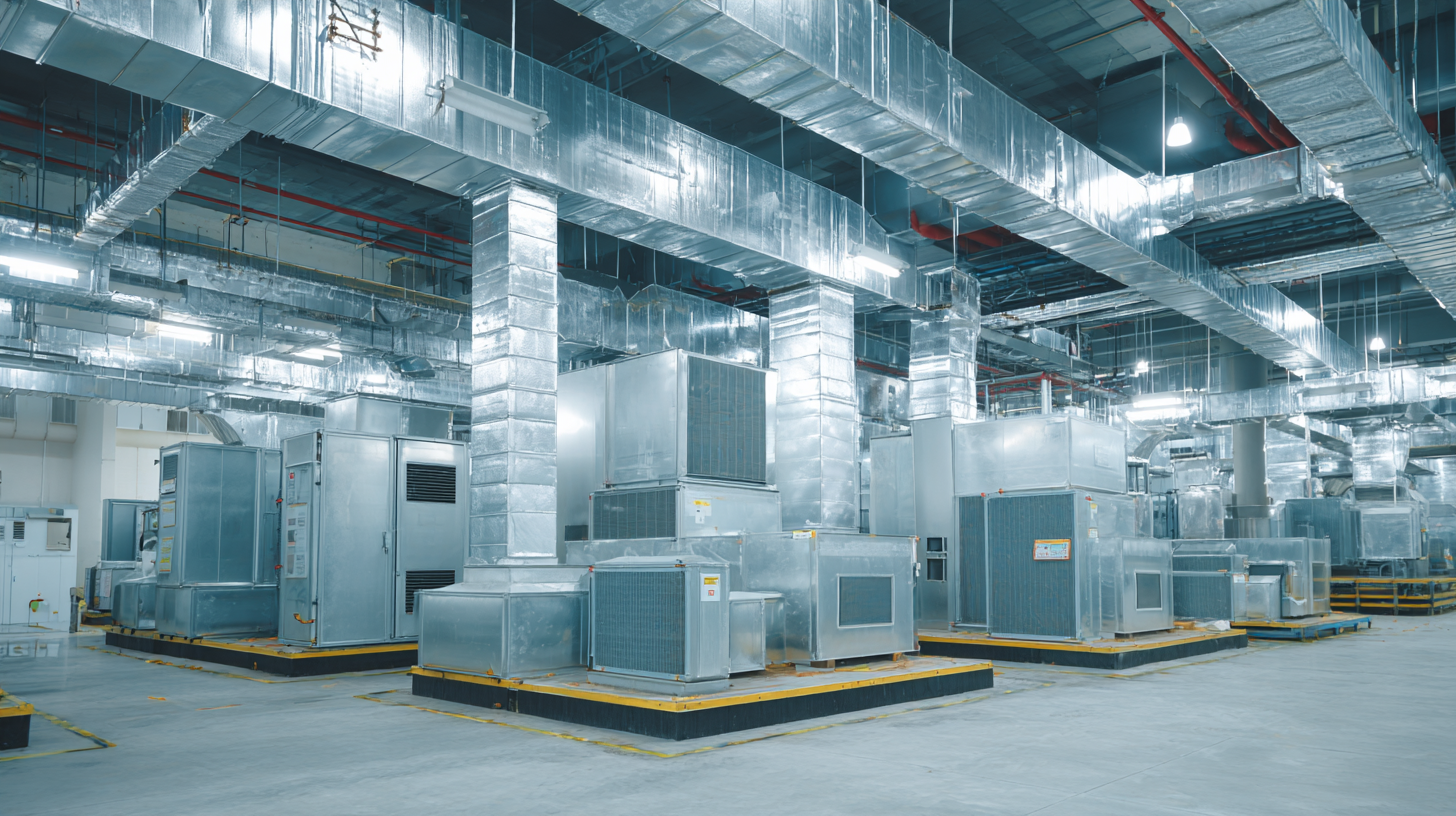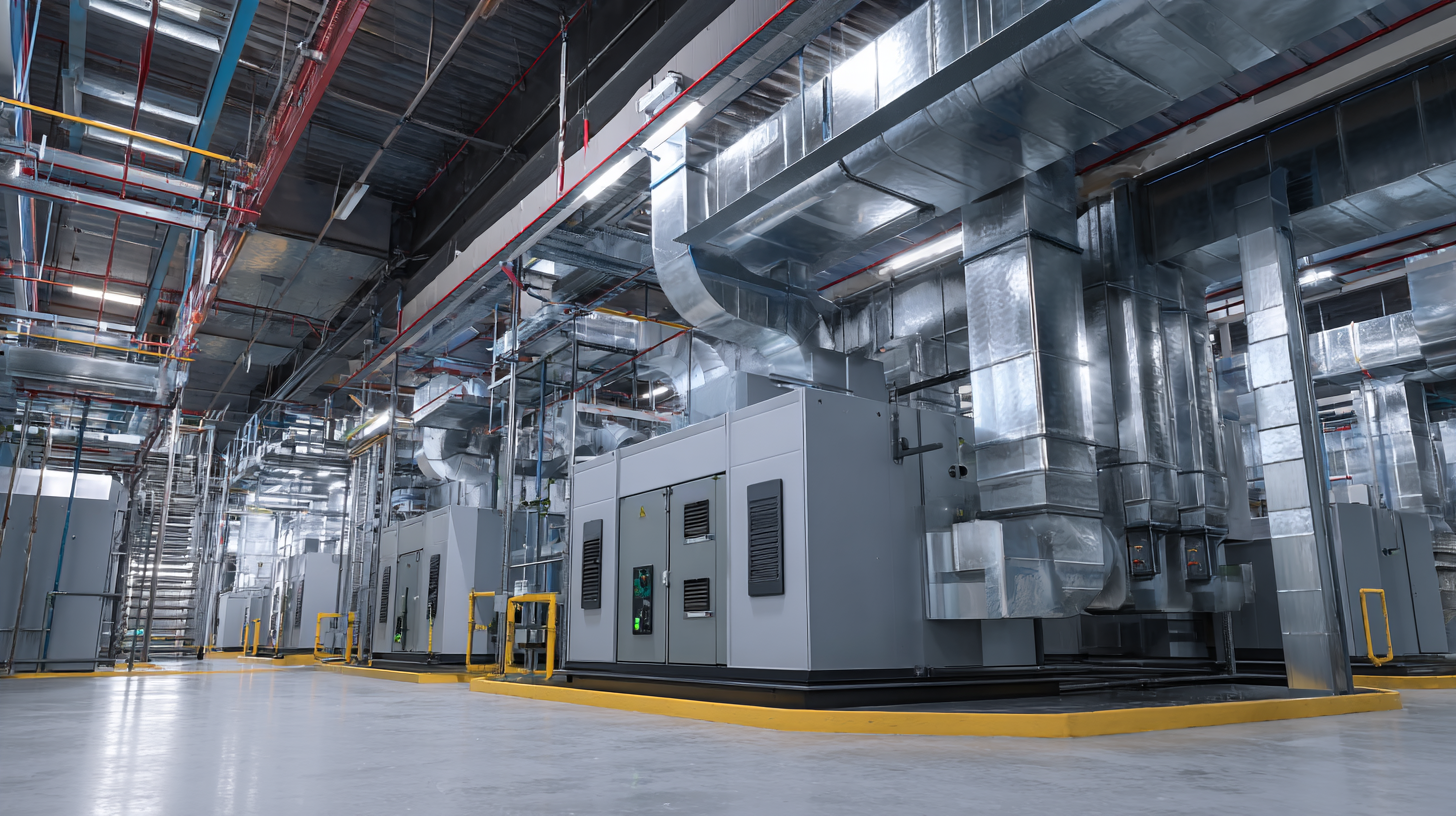Understanding the Importance of Air Handling Equipment for Indoor Air Quality Safety
Indoor air quality (IAQ) is crucial for maintaining a healthy and safe environment in both residential and commercial settings. According to the U.S. Environmental Protection Agency (EPA), indoor air pollution can often be two to five times worse than outdoor air, leading to significant health risks such as respiratory issues and other long-term conditions. In this context, the importance of air handling equipment cannot be overstated. These systems are responsible for circulating and purifying air, ensuring that contaminants are mitigated and that occupants breathe clean air.

A report from the National Institute of Health highlights that effective air handling equipment can reduce the concentration of airborne pollutants by up to 90%, making them a vital component in any IAQ management strategy. Investing in high-quality air handling units can lead to decreased health care costs and improved productivity, as studies show that better air quality is linked to enhanced cognitive function and overall performance. This underscores the necessity for stakeholders to prioritize the selection and maintenance of air handling equipment to safeguard indoor environments.
As we explore the "Top 10" reasons why air handling equipment is essential for indoor air quality safety, it becomes evident that these systems not only contribute to occupant health and comfort but also play a significant role in compliance with health standards and regulations. Understanding these facets is imperative for building managers, facility operators, and homeowners alike, as they strive toward creating safer and more breathable indoor spaces.
How to Assess the Current State of Your Indoor Air Quality
Assessing the current state of your indoor air quality (IAQ) is crucial for maintaining a healthy environment, especially in commercial and residential settings. According to the Environmental Protection Agency (EPA), indoor air can be two to five times more polluted than outdoor air. Factors such as poor ventilation, humidity, and the presence of volatile organic compounds (VOCs) can significantly impact air quality. Regular inspection and monitoring of air handling equipment is vital, as this equipment plays a key role in circulating and filtering indoor air.
To effectively assess your IAQ, consider conducting comprehensive air quality tests that measure particulates, CO2 levels, and humidity. The American Society of Heating, Refrigerating and Air-Conditioning Engineers (ASHRAE) recommends maintaining CO2 levels below 1,000 ppm to ensure adequate ventilation and comfort. Utilizing air quality monitors can provide real-time data, allowing for prompt intervention if pollutant levels rise. Furthermore, engaging a licensed professional for regular maintenance of air handling units and ductwork can prevent the buildup of contaminants, ensuring a consistent supply of clean, breathable air.

How to Choose the Right Air Handling Equipment for Your Needs
When selecting the right air handling equipment for your indoor air quality needs, it's essential to consider various factors that can influence performance and efficiency. The air handling units (AHUs) market is projected to grow significantly, with a forecasted value of $616,433 million by 2032, reflecting a compound annual growth rate of 6.3% from 2024. This growth is driven by increasing awareness of air quality's impact on health, as well as stricter regulations surrounding air pollution.
**Tips**: When choosing air handling equipment, evaluate whether you need packaged, modular, custom, or rooftop systems based on your specific environmental requirements. For environments that require precise temperature and humidity regulation, such as laboratories, modular and custom solutions often provide the best results.
In addition to type, consider the technology employed in your chosen equipment. Recent advancements, such as catalytic purification techniques designed to remove indoor ozone pollutants, highlight the importance of selecting modern solutions that offer enhanced air quality performance. These innovations can significantly improve indoor environments, ensuring a safer and healthier space for occupants.
**Tips**: Always assess the technical specifications and energy efficiency ratings of air handling systems. Investing in energy-efficient models not only reduces operational costs but also contributes to long-term sustainability goals.

How to Optimize Airflow and Ventilation for Healthier Spaces
Optimizing airflow and ventilation is crucial for creating healthier indoor spaces. Effective air handling systems ensure that fresh air is continuously circulated, reducing the concentration of indoor pollutants and allergens. By strategically placing air ducts and using high-quality filters, we can enhance air quality while minimizing energy consumption. Properly designed ventilation also helps maintain consistent indoor temperatures, which contributes to overall comfort and productivity.
In addition to the physical design of air handling systems, regular maintenance is key to optimizing airflow. Clean filters and well-maintained ducts prevent the accumulation of dust and mold, which can severely impact indoor air quality. Furthermore, integrating smart technologies enables real-time monitoring of air quality metrics, allowing for prompt adjustments to ventilation rates based on occupancy and pollutant levels. This proactive approach not only safeguards health but also promotes a sustainable and energy-efficient environment.
Understanding Indoor Air Quality Safety
How to Implement Regular Maintenance for Air Handling Systems
Regular maintenance of air handling systems is crucial for ensuring optimal indoor air quality and safety. According to recent data from industry reports, a well-maintained air handling unit (AHU) can improve energy efficiency by up to 15%, significantly reducing operational costs. This is particularly important in climates like that of Tampa, where air conditioning systems are in constant use. Regular checks for filters, coils, and fan operations can prevent the buildup of dust and harmful allergens, leading to cleaner air and a healthier environment.
Moreover, neglecting routine maintenance can lead to serious issues, such as system breakdowns or reduced lifespan of the equipment. A survey of HVAC professionals revealed that nearly 30% of commercial AHUs fail to meet performance standards due to insufficient upkeep. Implementing a structured maintenance schedule not only enhances system reliability but also ensures compliance with health regulations, making it essential for facilities management. By addressing these components regularly, property owners can enhance the efficiency, reliability, and longevity of their air handling equipment.
Understanding the Importance of Air Handling Equipment for Indoor Air Quality Safety - How to Implement Regular Maintenance for Air Handling Systems
| Maintenance Activity | Frequency | Estimated Time (Hours) | Impact on Air Quality | Cost ($) |
|---|---|---|---|---|
| Filter Replacement | Monthly | 1 | High | 50 |
| System Inspection | Quarterly | 2 | Medium | 150 |
| Duct Cleaning | Annually | 4 | High | 300 |
| Belt Adjustment | Semi-Annually | 1.5 | Low | 75 |
| Compressor Check | Annually | 3 | High | 200 |
How to Monitor Indoor Air Quality and Adjust Equipment Accordingly
The growing importance of indoor air quality (IAQ) monitoring solutions is underscored by the projected market expansion in Europe, which is expected to rise from $830.6 million in 2022 to $1,321.4 million by 2029, reflecting a compound annual growth rate (CAGR) of 6.9%. This highlights an increasing awareness among homeowners regarding the health implications of indoor contaminants, particularly volatile organic compounds like formaldehyde. As modern living spaces become increasingly airtight due to energy efficiency measures, the need for effective IAQ monitoring and management becomes paramount.
In this evolving landscape, air handling equipment plays a crucial role in ensuring safety and comfort indoors. Advanced monitoring technologies enable real-time assessment of air quality, allowing users to make informed adjustments to their HVAC systems accordingly. The integration of smart solutions that leverage IoT and AI trends facilitates personalized air quality management, where homeowners can fine-tune settings based on specific pollutant levels detected in their environment. As the market for IAQ solutions continues to grow, investment in sophisticated monitoring devices will become a staple for maintaining a healthy indoor living atmosphere.

